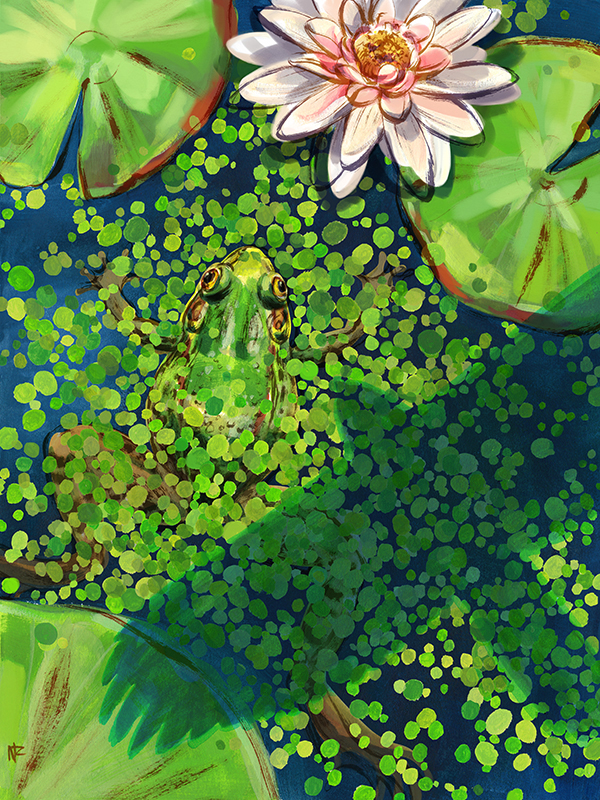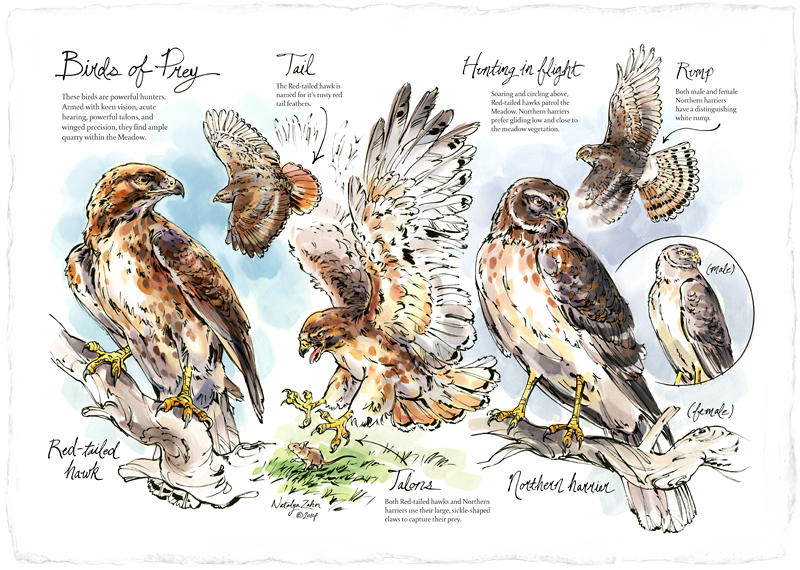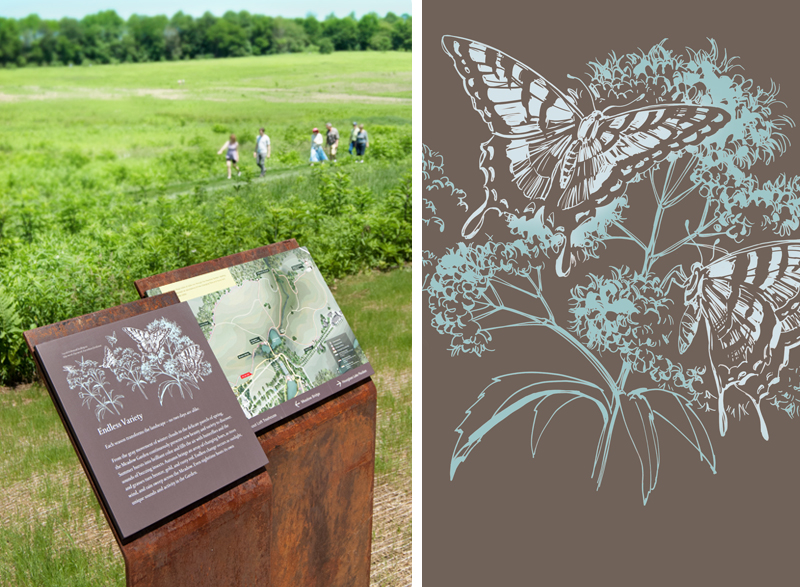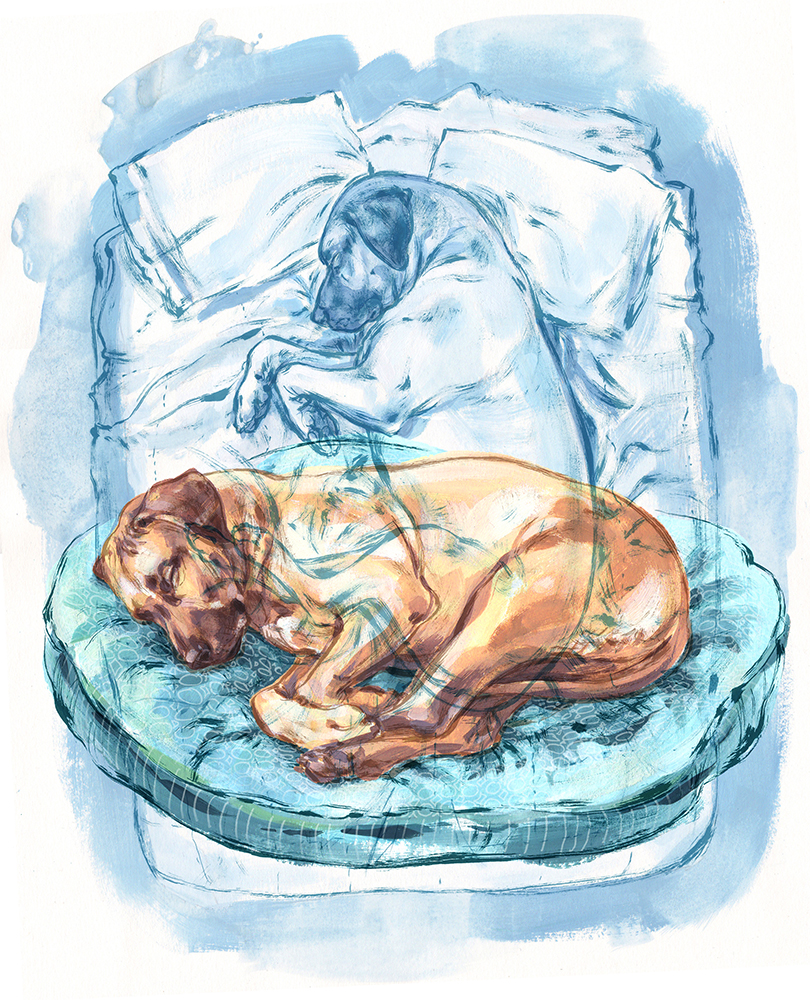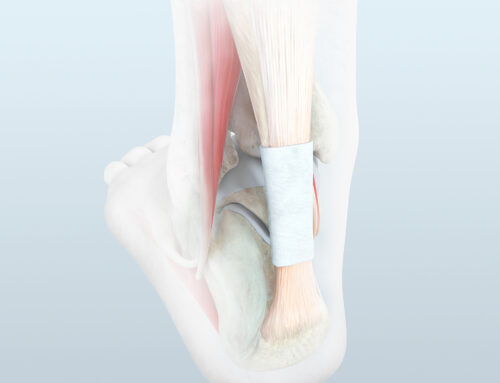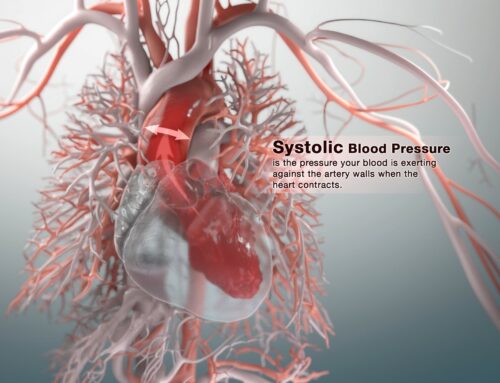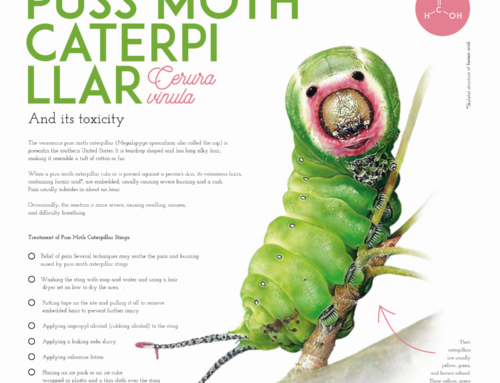Natalya Zahn is an illustrator and designer based out of Boston, Massachusetts. Specializing in animal and natural history subjects, she tells nuanced stories through captivating images that balance artistic expression with scientific accuracy.
Natalya’s award-winning work has appeared in print, packaging, museum exhibits and private collections across the globe and her clients include National Geographic, Longwood Botanical Garden, Oxford University Press, San Diego Zoo, Harvard Museum of Natural History, and the Vermont Department of Health.
We recently caught up with Natalya to talk more about her style, her biggest commission to date, and to take a closer look at her expressive and versatile work.
In addition to being part of the Medical Illustration Sourcebook program, Natalya Zahn is a member of the Guild of Natural Science Illustrators. When she’s not working in her studio, she can be found sitting in on dissections, attending livestock fairs, and perusing the archives of her local Museum of Comparative Zoology (sketchbook in hand).
Tell us about your background. Where did you grow up?
I was born and raised in northern Vermont. Both of my parents are artists, which set me up brilliantly to follow the same path, and I spent a large part of my childhood exploring the outdoors, which imbued me with a great respect for and fascination with nature. I’ve been drawing, painting and sculpting in one way or another for as long as I can remember, and my favorite subjects have always been animals.
How did your style evolve into what it is today?
It actually took me many years out of art school to develop my current working process and aesthetic. For a long time I used photorealism as my ultimate stylistic goal – looking back, my biggest fear was overworking pieces and choking the life out of them in an attempt to refine layer upon layer of detail. The older I got, however, the more I wanted to see that detail expressed not as rigid representation, but alive via personal expression. I became much more interested in the way mark-making can inform through gesture and stroke, and I allowed myself to experiment more with new mediums and quickening the pace at which I worked. I don’t consider this approach unfaithful to the subject, rather, I’m capturing emotion and energy along with the appearance of whatever form I see.
What have been some of the most memorable projects in your career thus far?
I’m grateful for the countless exciting and challenging projects I’ve had over the years, but one of my most memorable was actually one of my first: Very shortly after graduating from RISD I was commissioned to illustrate an online coloring book full of animals for National Geographic. The internet was not the force back then that it is today, and I was living temporarily in Florida at the time, so I had no real studio set-up to work in. To collect reference imagery I ended up spending many hours sketching from wildlife picture books in the children’s nature section of the Saint Augustine public library. The less-than-perfect circumstances likely lend this project extra nostalgia, but it truly was a dream assignment, right out of the gate, and I must have done alright since Nat Geo hired me 2 more times in following years to further extend the collection of artwork to over 50 animals in total.
What projects are you working on now?
I’m in the middle of some great projects right now – one has me illustrating the human digestive system for a company that makes herbal digestive bitters, another recently let me flex my imagination to combine hop flowers, right whales, and maritime icons for an image series advertising a Boston-based Brooklyn Brewery event. Regarding personal work, I’m furiously preparing for an exhibit at the end of the summer that will feature a brand new series of illustrations, patterned after textile and wallpaper design, and inspired by North American trees and their assorted pollinators. The show will be hung in a conservatory building at the Tower Hill Botanical Garden in Boylston, MA and I’m quite excited to see how it all comes together!
Longwood Botanical Gardens
The Longwood Meadow Exhibit was Natalya’s largest commission to date, including over 50 unique illustrations for placement on interpretive signage throughout a permanent, 86-acre outdoor exhibit at the celebrated Longwood Botanical Gardens in Kennet Square, PA. For the exhibit, Natalya worked with Pennsylvania-based exhibit design firm Gecko Group, who specializes in science, natural history, zoo and aquarium exhibits.
Why do you think the client chose you for the project?
Longwood was originally drawn to the gestural linework and liveliness in my sketchbook drawings, and since they were looking for a truly artful interpretation of the newly renovated Meadow exhibit, my ink and loosely colored representations of nature seemed like a perfect fit. We did work through an initial R&D phase at the front of the project to really hone in on how that spontaneous style would translate to scripted artwork (that would likely undergo rounds of revision) but once that was settled, it was off to the races.
What type of art direction did they provide?
I was provided layouts for each sign panel by Gecko, who’s designer determined the amount and placement of all texts. Art direction came primarily in the form of species lists for inclusion on any given panel, but color and composition were largely up to me. Most of the corrections requested were in relation to adjusting the accuracy of a specific animal or plant representation, and only once did we completely change a species due to difficulties with rendering and image legibility.
What artistic approach did you take with this project? Can you briefly walk us through your creative process?
My process began with image research into each species to be featured – this was mainly done online. I like to sketch digitally, as it’s cleaner and more efficient than drawing on paper, so I’d sit with a folder’s worth of images open on one monitor, and a Photoshop artboard on another, and draw out my compositions, working around blocks of descriptive text. From there, the digital sketches were submitted for review, edited if necessary, then printed out at 100% final scale. I have a large light table in my studio and ink work was done onto translucent drafting film overlaid onto the printed sketches.
The color was a bit more complicated: Since most of the signage panels were designed by Gecko to have a roughly 50% warm grey ground, and the illustrations needed to appear as if they were gently fading and in and out of that ground color, my paintings needed to be done on a nearly identical colored ground, so that the translucency in the paint would be a match. I selected a tinted illustration board as close to the signage grey as possible and then traced my sketches onto it with white transfer paper. All color was done as a separate layer from the line and painted in gouache, which allowed a perfect mix of luminous, thin layers and more bold, opaque areas.
Line and color layers were then scanned into Photoshop, background texture was dropped out and cleaned up, color was adjusted, and everything finally reassembled into the composite final artworks. The digital production on this project was a surprisingly large effort, but the effects were exactly what the team was hoping for.
Did you encounter any challenges while working on a commission of this magnitude?
This job presented numerous challenges for me; from wrapping my head around the initial scope of the work, to fine-tooling the complex contract, to pacing the actual image-making process to fit within a relatively short time-frame (roughly 5 months passed from start date to final delivery, requiring adherence to a strict calendar of milestone to be met). Then, within a month of the finish line, I broke my right wrist (my drawing hand!) in a bad accident…
One surgically implanted titanium plate and a few weeks of rest later and I was wrapping up the last of the art panels with a splint on my healing arm. Though obviously not an ideal situation, had the accident happened a few weeks earlier it would have had disastrous impacts on the overall production timeline – as it was, the interruption caused only a minor nuisance and didn’t have any effect on opening day. The experience taught me an awful lot about my personal tolerance and perseverance in the face of a “worst case scenario”; plus, I now have a bionic arm…
Dellas Graphics Frog Folio Calendar
Tell us more about Dellas Graphics and the Frog Folio Calendar.
Dellas Graphics is a printing, mailing, and fulfillment company in Syracuse, NY. For many years now they’ve been producing a frog-themed desk calendar, curated by top notch art directors, and filled with work from a revolving cast of some of the best illustrators in the country. The project is really a hidden gem. The AD I worked with, Jim Burke, chairs the Illustration department at the New Hampshire Institute of Art, where I happened to be teaching at the time I was invited to participate. I was incredibly honored.
How and why did you decide on the final image?
Being a realist, I wanted to accurately depict a species I was familiar with (the American bullfrog), but I decided to use duckweed and it’s disruptive effect on the frog’s silhouette to add an element of camouflage and patterning. The silhouette of the raptor flying overhead adds a narrative element of suspense.
Sleeping Positions
This illustration was published in the 2014 summer issue of Inkseed Magazine. Can you fill our readers in on what the article is about?
I’ve had my Rodhesian Ridgeback, Oscar, since he was a puppy, and for 6 years he wasn’t allowed to set foot on any furniture. This rule stood us both very well over the years, but during a very rough time for me I decided the comfort of snuggling with him outweighed a bed with no dog hair in it, and I changed the game. The article goes into more detail about that event.
Have you fueled your creativity in any other ways through Oscar? Say, a beautifully curated and illustrated blog?
Oscar has always inspired me but in 2011 I decided to make a concerted effort to draw more of him. To keep myself motivated I designed and branded a little blog specifically for that purpose, specifically for Oscar, and dedicated solely to canine subjects. Oscar’s penchant for stealing baked goods off of coworkers’ desks inspired the title: Oscar Ate My Muffin. The blog presented a great opportunity for testing new mediums and techniques – and though I didn’t know it at the time, the work I experimented with there led directly to much of the process I implement in my work today. Four years in, I have the added benefit of a whole portfolio of work through which I’ll be able to remember my sweet boy later on down the line. *Luckily for now he’s still very much alive and well, and ever-present near me on one of his numerous dog beds around the house and studio.

